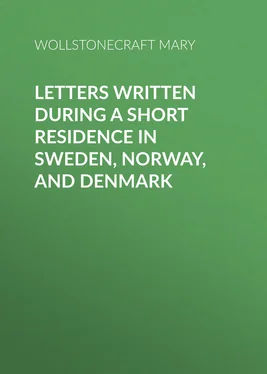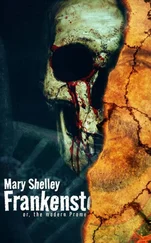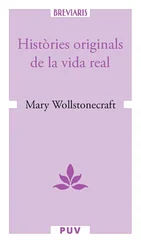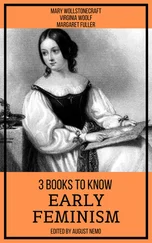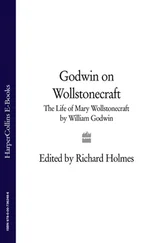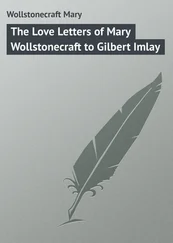Mary Wollstonecraft - Letters Written During a Short Residence in Sweden, Norway, and Denmark
Здесь есть возможность читать онлайн «Mary Wollstonecraft - Letters Written During a Short Residence in Sweden, Norway, and Denmark» — ознакомительный отрывок электронной книги совершенно бесплатно, а после прочтения отрывка купить полную версию. В некоторых случаях можно слушать аудио, скачать через торрент в формате fb2 и присутствует краткое содержание. Жанр: Биографии и Мемуары, literature_18, foreign_antique, на английском языке. Описание произведения, (предисловие) а так же отзывы посетителей доступны на портале библиотеки ЛибКат.
- Название:Letters Written During a Short Residence in Sweden, Norway, and Denmark
- Автор:
- Жанр:
- Год:неизвестен
- ISBN:нет данных
- Рейтинг книги:4 / 5. Голосов: 1
-
Избранное:Добавить в избранное
- Отзывы:
-
Ваша оценка:
- 80
- 1
- 2
- 3
- 4
- 5
Letters Written During a Short Residence in Sweden, Norway, and Denmark: краткое содержание, описание и аннотация
Предлагаем к чтению аннотацию, описание, краткое содержание или предисловие (зависит от того, что написал сам автор книги «Letters Written During a Short Residence in Sweden, Norway, and Denmark»). Если вы не нашли необходимую информацию о книге — напишите в комментариях, мы постараемся отыскать её.
Letters Written During a Short Residence in Sweden, Norway, and Denmark — читать онлайн ознакомительный отрывок
Ниже представлен текст книги, разбитый по страницам. Система сохранения места последней прочитанной страницы, позволяет с удобством читать онлайн бесплатно книгу «Letters Written During a Short Residence in Sweden, Norway, and Denmark», без необходимости каждый раз заново искать на чём Вы остановились. Поставьте закладку, и сможете в любой момент перейти на страницу, на которой закончили чтение.
Интервал:
Закладка:
Mary Wollstonecraft
Letters Written During a Short Residence in Sweden, Norway, and Denmark
INTRODUCTION
Mary Wollstonecraft was born on the 27th of April, 1759. Her father—a quick-tempered and unsettled man, capable of beating wife, or child, or dog—was the son of a manufacturer who made money in Spitalfields, when Spitalfields was prosperous. Her mother was a rigorous Irishwoman, of the Dixons of Ballyshannon. Edward John Wollstonecraft—of whose children, besides Mary, the second child, three sons and two daughters lived to be men and women—in course of the got rid of about ten thousand pounds, which had been left him by his father. He began to get rid of it by farming. Mary Wollstonecraft’s first-remembered home was in a farm at Epping. When she was five years old the family moved to another farm, by the Chelmsford Road. When she was between six and seven years old they moved again, to the neighbourhood of Barking. There they remained three years before the next move, which was to a farm near Beverley, in Yorkshire. In Yorkshire they remained six years, and Mary Wollstonecraft had there what education fell to her lot between the ages of ten and sixteen. Edward John Wollstonecraft then gave up farming to venture upon a commercial speculation. This caused him to live for a year and a half at Queen’s Row, Hoxton. His daughter Mary was then sixteen; and while at Hoxton she had her education advanced by the friendly care of a deformed clergyman—a Mr. Clare—who lived next door, and stayed so much at home that his one pair of shoes had lasted him for fourteen years.
But Mary Wollstonecraft’s chief friend at this time was an accomplished girl only two years older than herself, who maintained her father, mother, and family by skill in drawing. Her name was Frances Blood, and she especially, by her example and direct instruction, drew out her young friend’s powers. In 1776, Mary Wollstonecraft’s father, a rolling stone, rolled into Wales. Again he was a farmer. Next year again he was a Londoner; and Mary had influence enough to persuade him to choose a house at Walworth, where she would be near to her friend Fanny. Then, however, the conditions of her home life caused her to be often on the point of going away to earn a living for herself. In 1778, when she was nineteen, Mary Wollstonecraft did leave home, to take a situation as companion with a rich tradesman’s widow at Bath, of whom it was said that none of her companions could stay with her. Mary Wollstonecraft, nevertheless, stayed two years with the difficult widow, and made herself respected. Her mother’s failing health then caused Mary to return to her. The father was then living at Enfield, and trying to save the small remainder of his means by not venturing upon any business at all. The mother died after long suffering, wholly dependent on her daughter Mary’s constant care. The mother’s last words were often quoted by Mary Wollstonecraft in her own last years of distress—“A little patience, and all will be over.”
After the mother’s death, Mary Wollstonecraft left home again, to live with her friend, Fanny Blood, who was at Walham Green. In 1782 she went to nurse a married sister through a dangerous illness. The father’s need of support next pressed upon her. He had spent not only his own money, but also the little that had been specially reserved for his children. It is said to be the privilege of a passionate man that he always gets what he wants; he gets to be avoided, and they never find a convenient corner of their own who shut themselves out from the kindly fellowship of life.
In 1783 Mary Wollstonecraft—aged twenty-four—with two of her sisters, joined Fanny Blood in setting up a day school at Islington, which was removed in a few months to Newington Green. Early in 1785 Fanny Blood, far gone in consumption, sailed for Lisbon to marry an Irish surgeon who was settled there. After her marriage it was evident that she had but a few months to live; Mary Wollstonecraft, deaf to all opposing counsel, then left her school, and, with help of money from a friendly woman, she went out to nurse her, and was by her when she died. Mary Wollstonecraft remembered her loss ten years afterwards in these “Letters from Sweden and Norway,” when she wrote: “The grave has closed over a dear friend, the friend of my youth; still she is present with me, and I hear her soft voice warbling as I stray over the heath.”
Mary Wollstonecraft left Lisbon for England late in December, 1785. When she came back she found Fanny’s poor parents anxious to go back to Ireland; and as she had been often told that she could earn by writing, she wrote a pamphlet of 162 small pages—“Thoughts on the Education of Daughters”—and got ten pounds for it. This she gave to her friend’s parents to enable them to go back to their kindred. In all she did there is clear evidence of an ardent, generous, impulsive nature. One day her friend Fanny Blood had repined at the unhappy surroundings in the home she was maintaining for her father and mother, and longed for a little home of her own to do her work in. Her friend quietly found rooms, got furniture together, and told her that her little home was ready; she had only to walk into it. Then it seemed strange to Mary Wollstonecraft that Fanny Blood was withheld by thoughts that had not been uppermost in the mood of complaint. She thought her friend irresolute, where she had herself been generously rash. Her end would have been happier had she been helped, as many are, by that calm influence of home in which some knowledge of the world passes from father and mother to son and daughter, without visible teaching and preaching, in easiest companionship of young and old from day to day.
The little payment for her pamphlet on the “Education of Daughters” caused Mary Wollstonecraft to think more seriously of earning by her pen. The pamphlet seems also to have advanced her credit as a teacher. After giving up her day school, she spent some weeks at Eton with the Rev. Mr. Prior, one of the masters there, who recommended her as governess to the daughters of Lord Kingsborough, an Irish viscount, eldest son of the Earl of Kingston. Her way of teaching was by winning love, and she obtained the warm affection of the eldest of her pupils, who became afterwards Countess Mount-Cashel. In the summer of 1787, Lord Kingsborough’s family, including Mary Wollstonecraft, was at Bristol Hot-wells, before going to the Continent. While there, Mary Wollstonecraft wrote her little tale published as “Mary, a Fiction,” wherein there was much based on the memory of her own friendship for Fanny Blood.
The publisher of Mary Wollstonecraft’s “Thoughts on the Education of Daughters” was the same Joseph Johnson who in 1785 was the publisher of Cowper’s “Task.” With her little story written and a little money saved, the resolve to live by her pen could now be carried out. Mary Wollstonecraft, therefore, parted from her friends at Bristol, went to London, saw her publisher, and frankly told him her determination. He met her with fatherly kindness, and received her as a guest in his house while she was making her arrangements. At Michaelmas, 1787, she settled in a house in George Street, on the Surrey side of Blackfriars Bridge. There she produced a little book for children, of “Original Stories from Real Life,” and earned by drudgery for Joseph Johnson. She translated, she abridged, she made a volume of Selections, and she wrote for an “Analytical Review,” which Mr. Johnson founded in the middle of the year 1788. Among the books translated by her was Necker “On the Importance of Religious Opinions.” Among the books abridged by her was Salzmann’s “Elements of Morality.” With all this hard work she lived as sparely as she could, that she might help her family.
Читать дальшеИнтервал:
Закладка:
Похожие книги на «Letters Written During a Short Residence in Sweden, Norway, and Denmark»
Представляем Вашему вниманию похожие книги на «Letters Written During a Short Residence in Sweden, Norway, and Denmark» списком для выбора. Мы отобрали схожую по названию и смыслу литературу в надежде предоставить читателям больше вариантов отыскать новые, интересные, ещё непрочитанные произведения.
Обсуждение, отзывы о книге «Letters Written During a Short Residence in Sweden, Norway, and Denmark» и просто собственные мнения читателей. Оставьте ваши комментарии, напишите, что Вы думаете о произведении, его смысле или главных героях. Укажите что конкретно понравилось, а что нет, и почему Вы так считаете.
